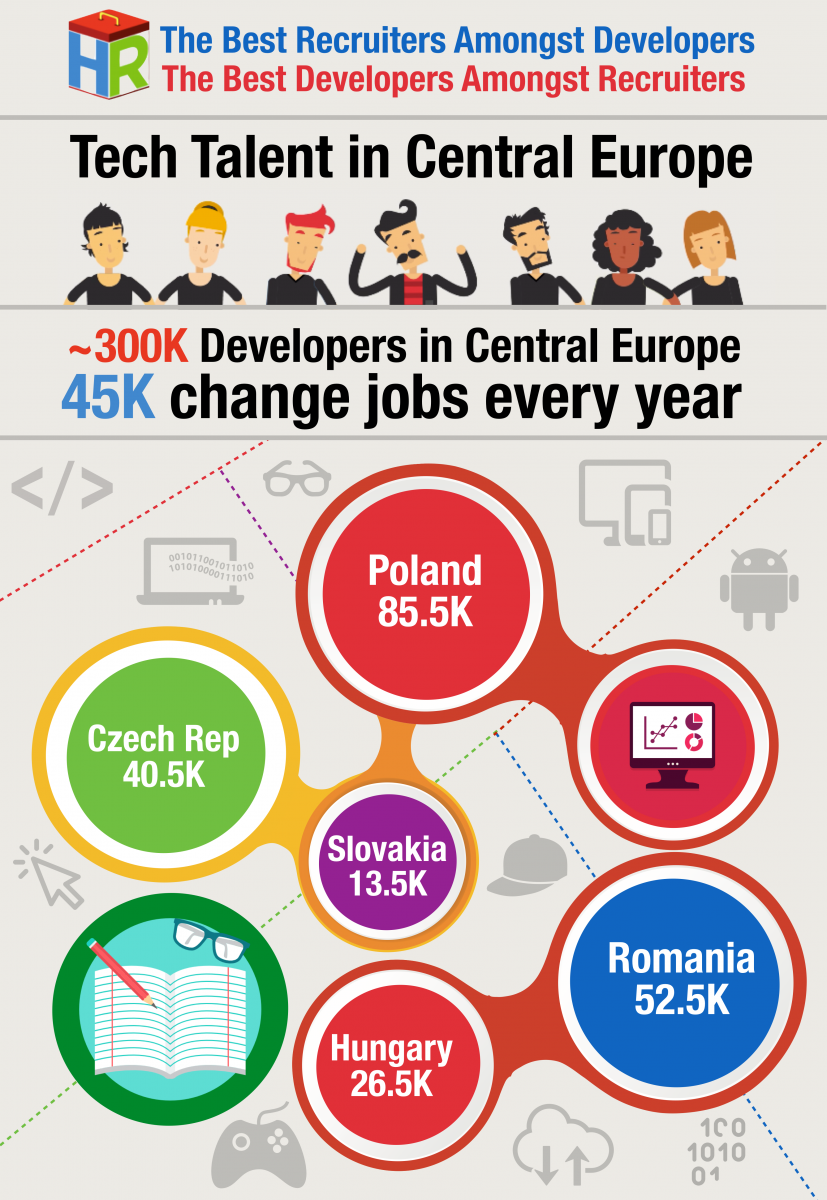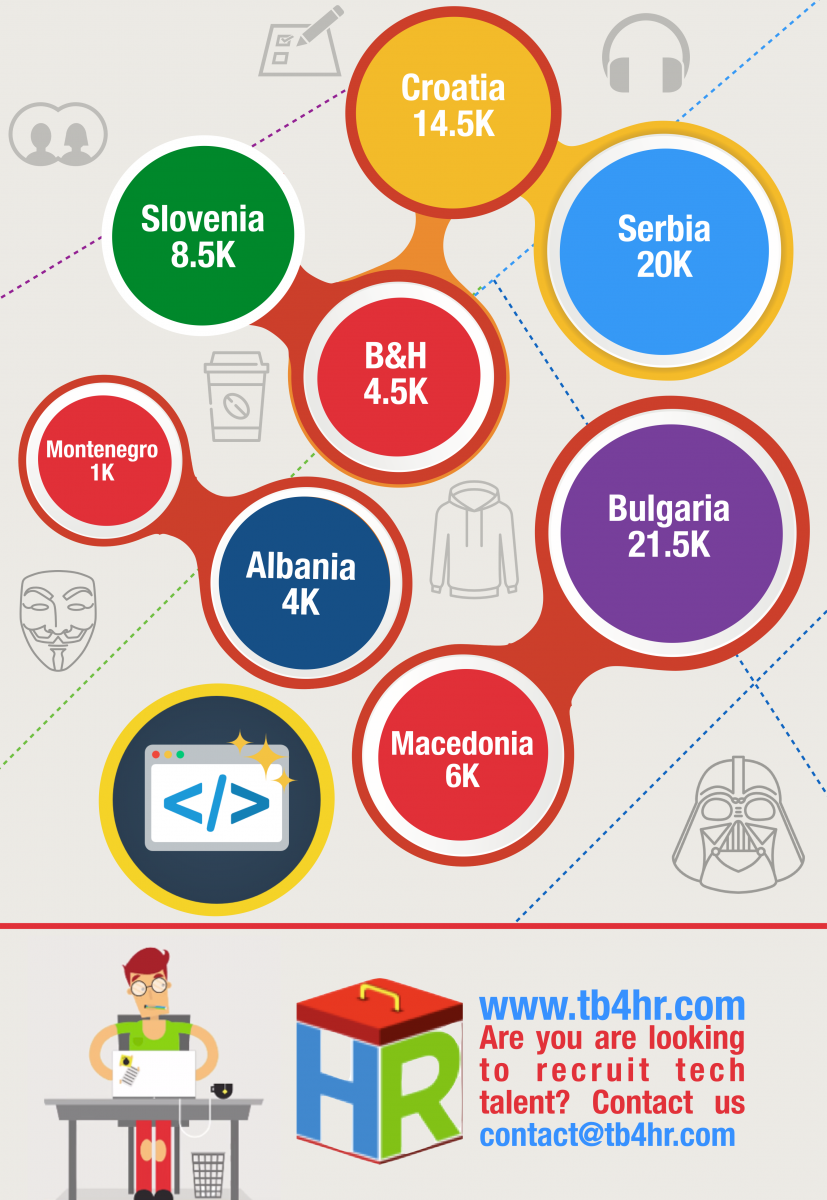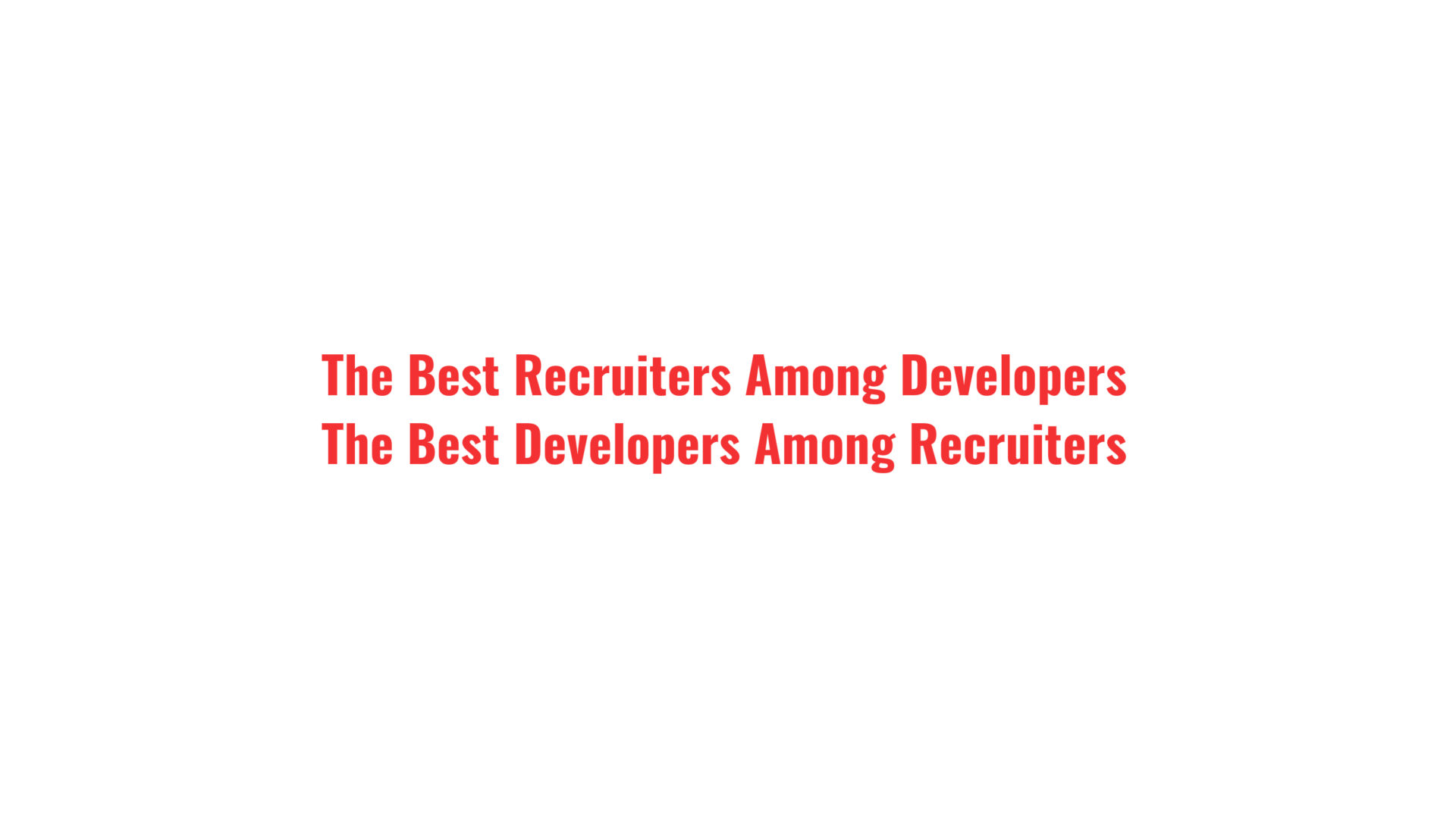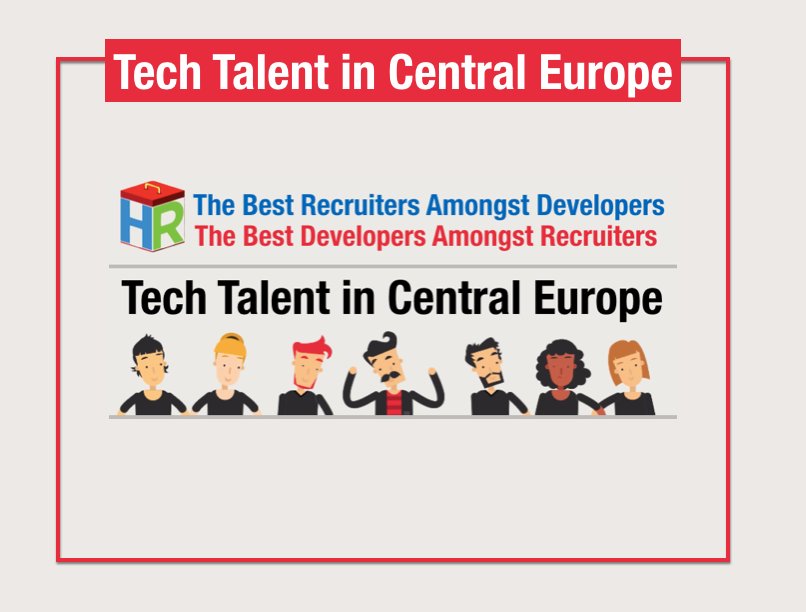Infographic : Tech Talent in Central Europe
TB4HR Team
0
We recently made small exercise sizing the markets of Central Europe from the perspective of tech talent. In between Black, Adriatic and Baltic Seas there is a talent pool of ~300K developers with different tech stacks. We will be releasing tech stack statistics soon so keep on checking our blog, Twitter, Linkedin, and Facebook!
Keep on recruiting!
Marcin Smolinski
Founder @ Toolbox for HR
PS. Data has been collected using #TB4HRLabs tools and methodologies. #TB4HRLabs is a research department of Toolbox for HR. #TB4HRLabs primary task is to conduct research & analysis in the field of talent market, emerging technologies and future of work. To know more visit http://tb4hrlabs.com/





